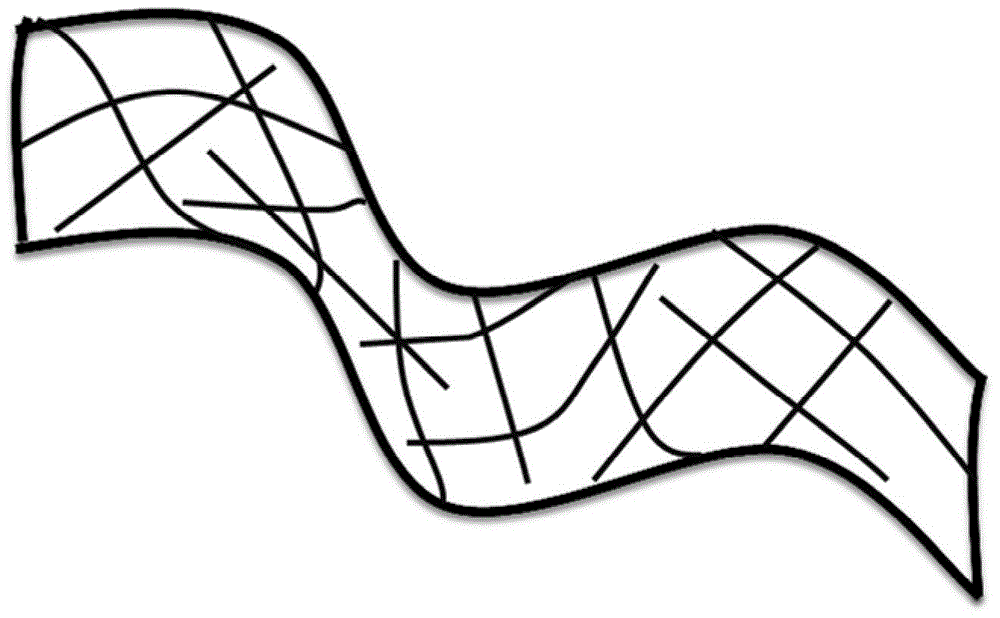Nanowire-based flexible transparent conducting electrode and preparation method thereof
A technology of transparent conductive electrodes and nanowires, applied in the direction of conductive materials dispersed in non-conductive inorganic materials, cable/conductor manufacturing, circuits, etc., can solve the problem of material consumption environment, difficulty in wire processing, nanowire breakage or shedding, etc. problems, achieve the effect of no inert gas protection, convenient and quick molding, and material cost saving
- Summary
- Abstract
- Description
- Claims
- Application Information
AI Technical Summary
Problems solved by technology
Method used
Image
Examples
preparation example Construction
[0026] The invention provides a method for preparing a flexible transparent conductive electrode based on nanowires, which includes the following steps: uniformly dispersing the nanowires in a mixed liquid composed of a monomer, a photoinitiator and a surfactant, and then placing the mixed liquid in In the mold and placed under the light source, the mixed solution undergoes photopolymerization under light to induce nanowires to aggregate and solidify into shape.
[0027] As a further preferred embodiment, the mold is made of a flexible polymer film (such as PET) or polydimethylsiloxane, or hard glass, or a transparent container with a complex structure.
[0028] As a further preferred embodiment, the light source may be a continuous spectrum light source or a laser, and the light source may be ultraviolet light or visible light.
[0029] Further as a preferred embodiment, the monomers are methyl methacrylate, butyl acrylate, isooctyl acrylate, tripropylene glycol diacrylate, t...
Embodiment 1
[0044] Silver nanowires with a diameter of 40 nm and an aspect ratio of 800 with a volume fraction of 0.02% were added to the mixture containing monomers, surfactants and photoinitiators. Among them, the monomer adopts methyl methacrylate and pentaerythritol tetraacrylate with a mass ratio of 3:1, the surfactant adopts cetyl mercaptan which accounts for 5% of the total monomer mass, and the photoinitiator adopts 1.5% of the total monomer mass. % TPO. The mixed liquid is uniformly mixed by ultrasonic and then coated on the PDMS mold, and the mixed liquid is subjected to photopolymerization reaction by ultraviolet light and then cured to form a flat linear flexible transparent conductive electrode.
Embodiment 2
[0046] Copper nanowires with a diameter of 80 nm and an aspect ratio of 200 with a volume fraction of 0.5% were added to the mixture containing monomers, surfactants and photoinitiators. Among them, the monomer is isooctyl acrylate, pentaerythritol tetraacrylate and trimethylolpropane tris (3-mercaptopropionate) with a mass ratio of 5:4:1, and the surfactant is 10% of the total mass of the monomer. 3,3'-carbonylbis(7-diethylaminocoumarin) accounting for 0.3% of the total mass of the monomer and N-phenylglycine accounting for 1% of the total mass of the monomer are used as the photoinitiator. The mixed solution is uniformly mixed by ultrasonic and then coated on the mold, and the mixed solution undergoes photopolymerization under visible light, and then solidified and formed to obtain a film-like flexible transparent conductive electrode.
PUM
| Property | Measurement | Unit |
|---|---|---|
| diameter | aaaaa | aaaaa |
| electrical resistivity | aaaaa | aaaaa |
| transmittivity | aaaaa | aaaaa |
Abstract
Description
Claims
Application Information
 Login to View More
Login to View More - R&D
- Intellectual Property
- Life Sciences
- Materials
- Tech Scout
- Unparalleled Data Quality
- Higher Quality Content
- 60% Fewer Hallucinations
Browse by: Latest US Patents, China's latest patents, Technical Efficacy Thesaurus, Application Domain, Technology Topic, Popular Technical Reports.
© 2025 PatSnap. All rights reserved.Legal|Privacy policy|Modern Slavery Act Transparency Statement|Sitemap|About US| Contact US: help@patsnap.com

